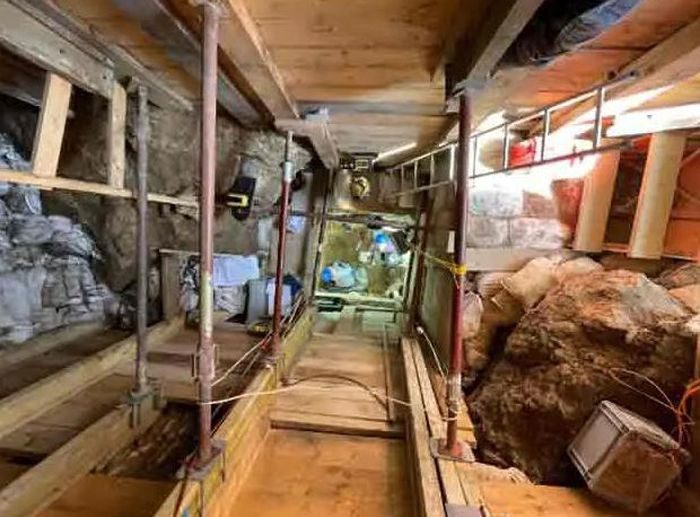The skeletons found in the Ilsenhöhle cave in Germany provide evidence of a significant phase in human migration and evolution.
According to two publications in the journals Nature and Nature Ecology & Evolution, the remains from the Ilsenhöhle cave belong to the descendants of the earliest humans—still Homo sapiens “purebred”—who crossed the Alps to explore new lands, where their descendants encountered the ancient Neanderthal people.
This research was conducted by a multinational team from the University of Paris (France), the Max Planck Institute for Evolutionary Anthropology (Germany), and several other institutions.

Excavation site of ancient human remains in Ilsenhöhle cave – (Photo: NATURE).
Neanderthals belong to the same genus Homo as modern Homo sapiens and vanished from Europe approximately 40,000 years ago.
However, increasing evidence suggests that interbreeding occurred between the two species, leading to the fact that most of us today are of mixed ancestry.
A significant portion of the current population carries about 2% Neanderthal DNA, not to mention a small fraction of DNA from other archaic human species.
For this to happen, Homo sapiens and Neanderthals needed to meet and coexist for a period before the harsh evolutionary history wiped out these other relatives.
The hypothesis posits that these encounters occurred after Homo sapiens crossed the Alps around 45,000 years ago, during which many distinct groups with unique cultures spread widely across present-day Europe.
The group whose remains were found in the Ilsenhöhle cave belonged to tribes occupying Eastern and Central Germany, near the present-day village of Rains in the state of Thuringia.
Their tool-making culture was also dominant in various regions of Europe during the Paleolithic era, related to both Homo sapiens and Neanderthals, further evidencing the close interaction between these two species.
Archaeological evidence also indicates that our direct ancestors established a tight-knit settlement, capable of surviving the cold weather of this period, an advantage that helped them survive long after the Neanderthals went extinct.
The horse teeth found in the Ilsenhöhle cave suggest they may have even kept horses with them during the frigid, deep-freeze periods recorded in the sediments.
Compared to other groups, this population interbred less with Neanderthals, likely due to harsh weather conditions and survival competition limiting mating opportunities.
However, this also preserved a more pristine gene pool, helping us to better understand the genetic traits of the early humans who crossed the Alps, allowing for a comparison with the distinctly mixed individuals found in other regions, thereby completing the complex evolutionary picture of humanity.




















































